Illusion of lightness #5
since June 15, 2009
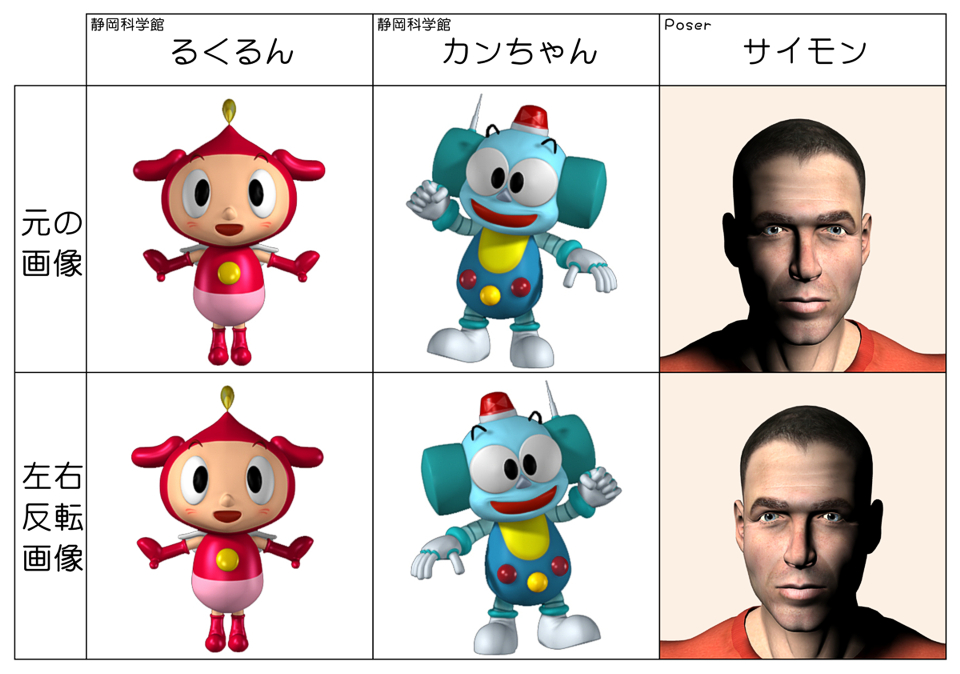
"Rukurun, Kanchan and Simon"
Faces illuminated from the left (lower row) appear to be brighter than those illuminated from the right (upper row).
Copyright Akiyoshi Kitaoka 2014 (April 16)
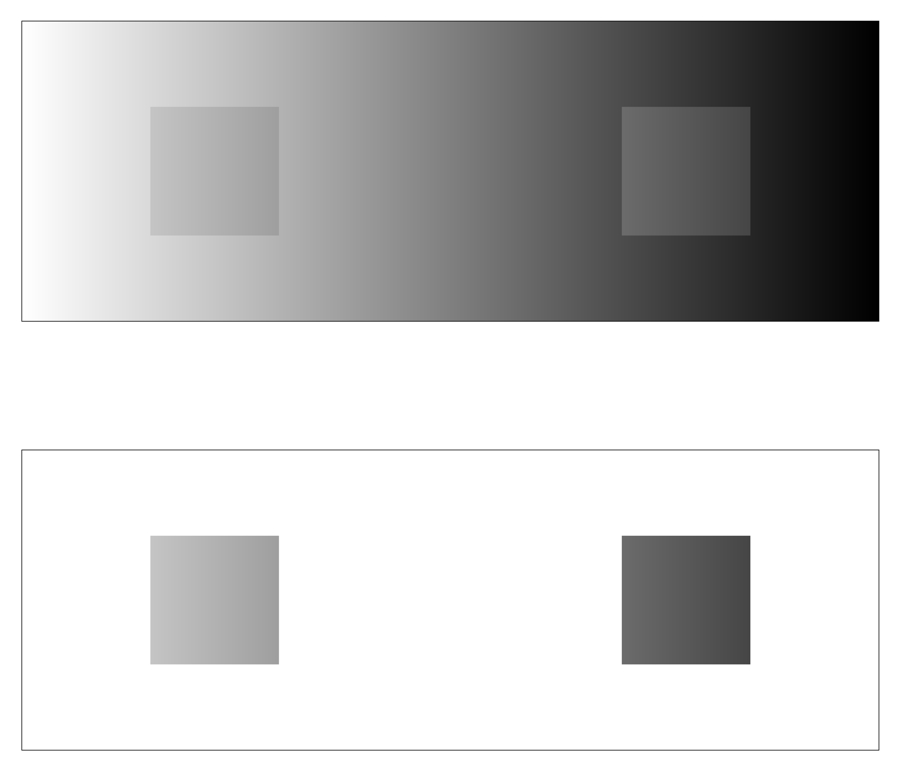
Luminance-gradient-dependent lightness illusion #2
In the upper panel, the left square appears to have similar lightness to the right one, though the left is much lighter than the right as shown in the lower panel.
Copyright Akiyoshi Kitaoka 2014 (March 21)
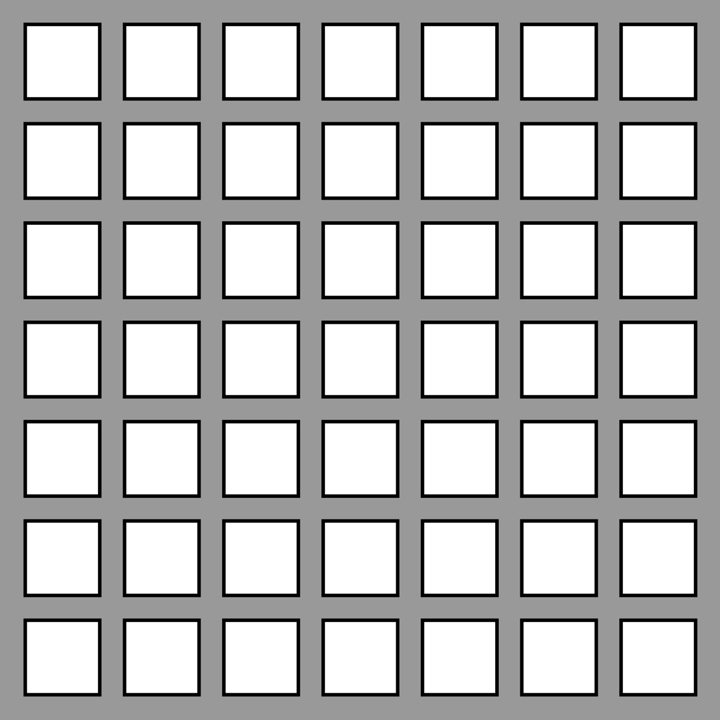
"Hermann grid illusion-like illusion"
There appear to be illusory blobs, each of which appears to be a dark dot surrounded by a light circle. They cannot be seen in the central vision.
Copyright Akiyoshi Kitaoka 2014 (February 5)
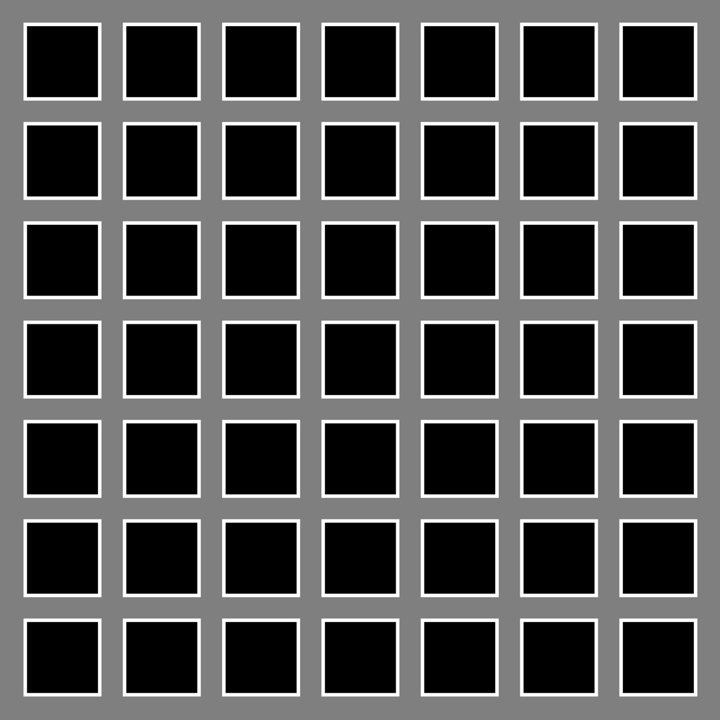
"Hering grid illusion-like illusion"
There appear to be illusory blobs, each of which appears to be made of a light dot surrounded by a dark circle. They cannot be seen in the central vision.
Copyright Akiyoshi Kitaoka 2014 (February 5)
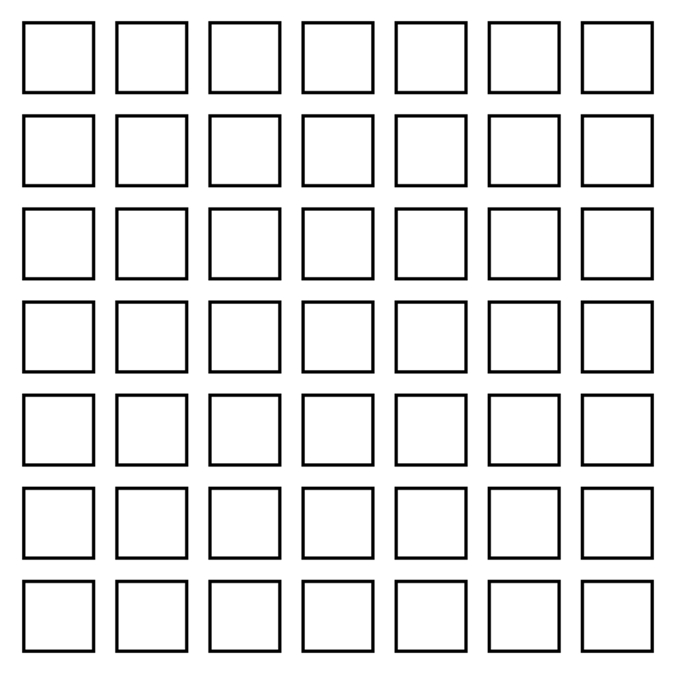
Horemis grid illusion
produced Akiyoshi Kitaoka 2014 (February 6)
References
Berbaum, K. and Chung, C. S. (1981) Perceptive field sizes and a new version
of the Hermann grid. Perception, 10(1), 85-89. (Figure 2)
Horemis, S. (1970) Optical and Geometrical Patterns and Designs. New York:
Dover.
Spillmann, L. (1994) The Hermann grid illusion: a tool for studying human perceptive field organization. Perception, 23, 691-708.
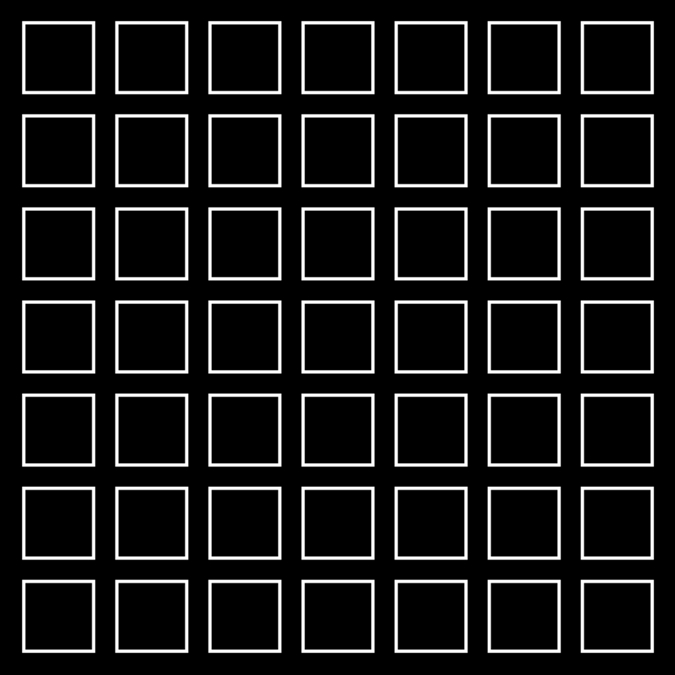
Horemis grid illusion: Hering grid illusion type
produced Akiyoshi Kitaoka 2014 (February 6)
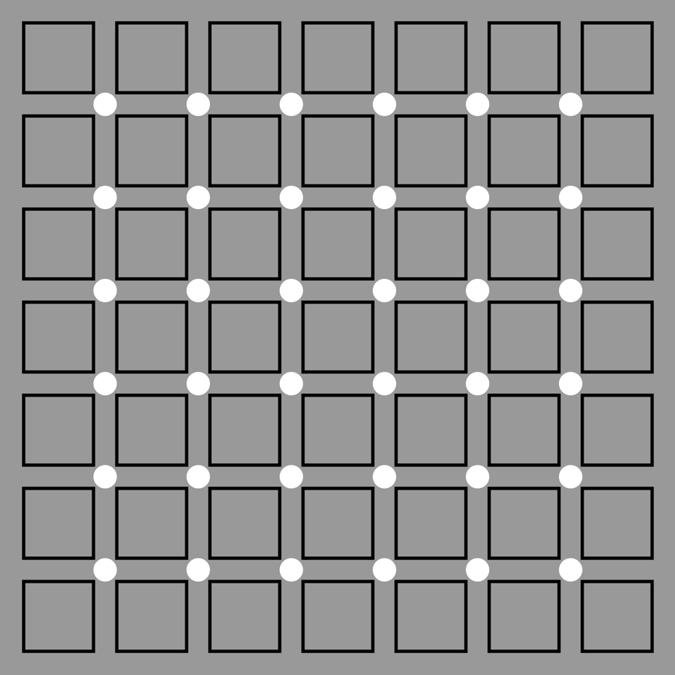
Horemis grid illusion: Scintillating grid illusion type; or Scintillating grid illusion: Horemis grid illusion type
produced Akiyoshi Kitaoka 2014 (February 6)

"Lightness modulation illusion"
When observers approach the image fixating at the center, the upper and lower pie slices appear to be brighter and to be tinted yellowish while the right and left ones appear to be darker and to be tinted bluish. When observers move away from the image, the reversal is observed.
Copyright Akiyoshi Kitaoka 2012 (November 19)
![]()
Cavanagh, P. & Anstis, S. M. (1986). Brightness shift in drifting ramp gratings isolates a transient mechanism. Vision Research, 26(6), 899-908.
<July 5, 2020>
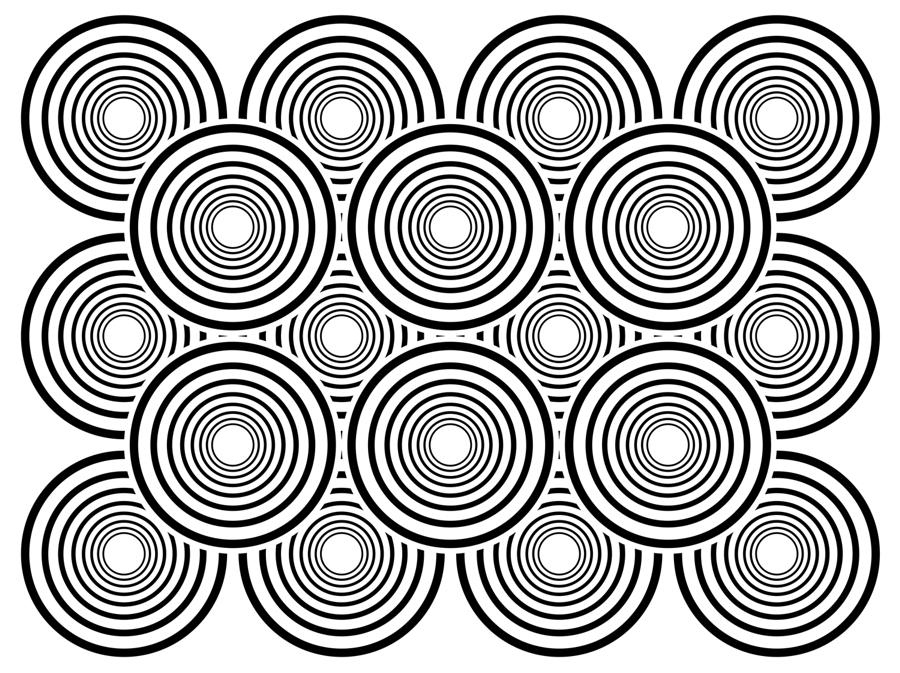
"Yanaka-Kitaoka's brightness-illusion rings"
The center of a disk of rings appears to be brighter while intervals of rings appear to be darker, though they are the same white.
Copyright Akiyoshi Kitaoka 2012 (April 10)
Professor Kazutoshi Yanaka made this image and Kitaoka pointed out the illusion.
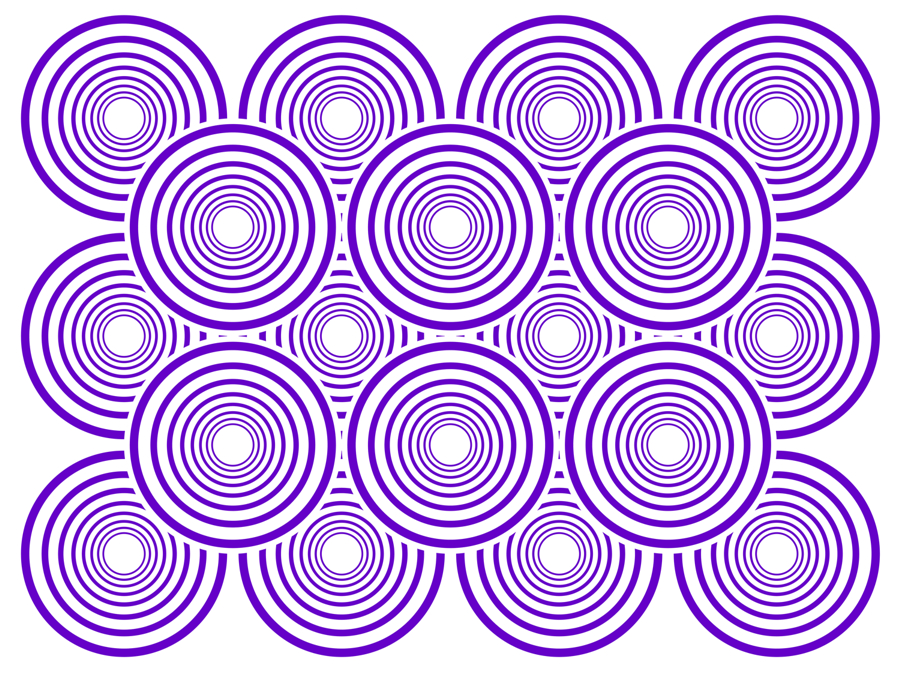
"Yanaka-Kitaoka's brightness-color-illusion rings"
The center of a disk of rings appears to be brighter while intervals of rings appear to be tinted purple, though they are the same white.
Copyright Akiyoshi Kitaoka 2012 (April 10)
"Strong morning sunlight"
It looks very bright when the dark image is changed to the bright one.
Copyright Akiyoshi Kitaoka 2012 (January 25)
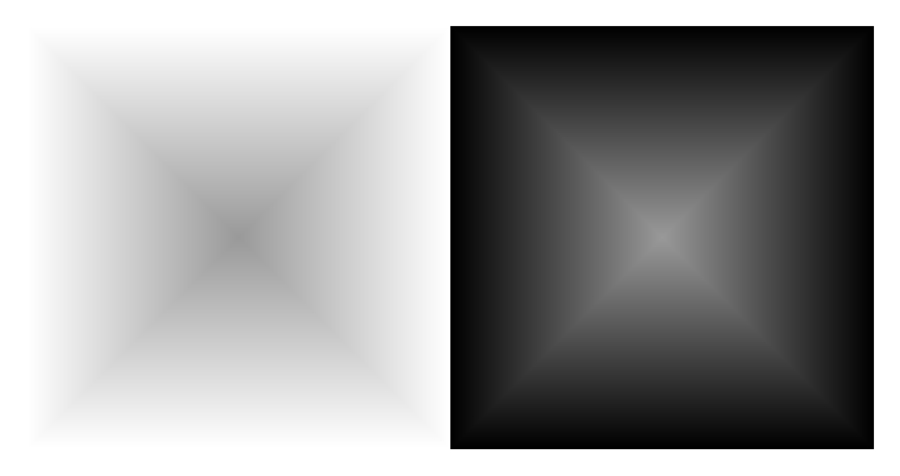
"Lightness contrast of the Vasarely illusion"
The apprent dark diagonals in the left square is actually higher in luminance than the apparent bright diagonals in the right square.
Copyright Akiyoshi Kitaoka 2011 (November 6)

"Forests"
Diamonds appear to be different in lightness, though they are the same in luminance gradient. This illusion is called "shaded diamonds".
Copyright Akiyoshi Kitaoka 2010 (January 5)
Shaded-diamond illusion
Watanabe, I., and Anstis, S. (1997) Contour and shading range affect diamond illusion. ARVO Annual Meeting, Fort Lauderdale, Florida.
Watanabe, I., and Anstis, S. (1996) Shaded diamonds also give an illusion of color. ARVO Annual Meeting, Fort Lauderdale, Florida.
Watanabe, I., Cavanagh, P., Anstis, S., and Shrira, I. (1995) Shaded diamonds give an illusion of brightness. ARVO Annual Meeting, Fort Lauderdale, Florida.
Professsor Isao Watanabe's webpages
Professor Michael Bach's webpages
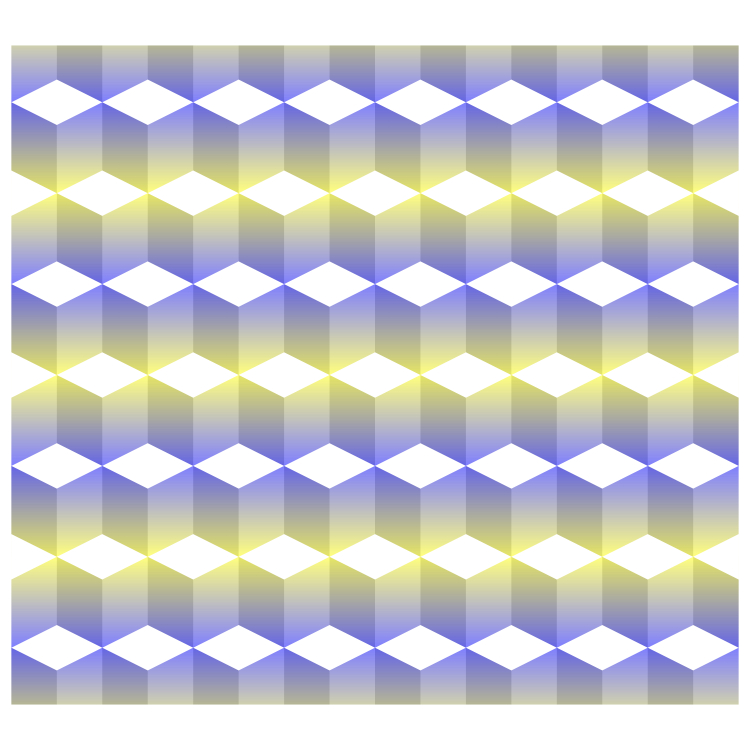
"Gold deposit"
White diamonds appear to be bright.
Copyright Akiyoshi Kitaoka 2009 (September 20)
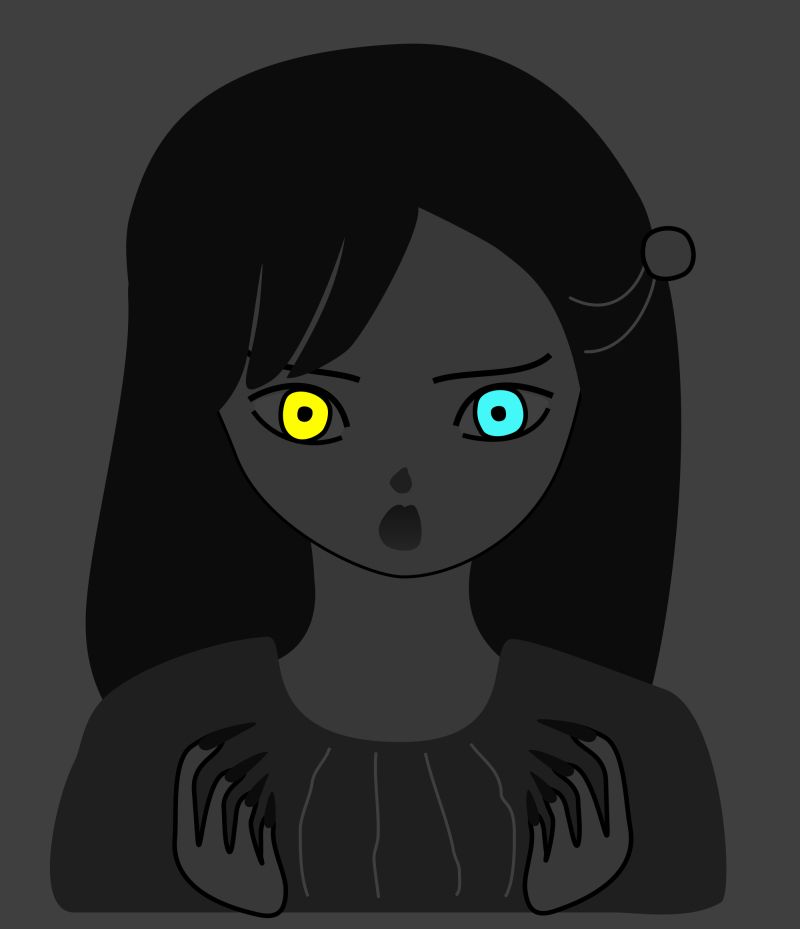
"Self-luminous eyes"
The eyes appear to be bright.
Copyright Akiyoshi Kitaoka 2009 (September 1)

"Obake-hime 2"
obake = ghost; hime = princess or girl
The whites of the eyes appear to be brighter than white, though they are the same white as the surround.
Copyright Akiyoshi Kitaoka 2009 (August 5)
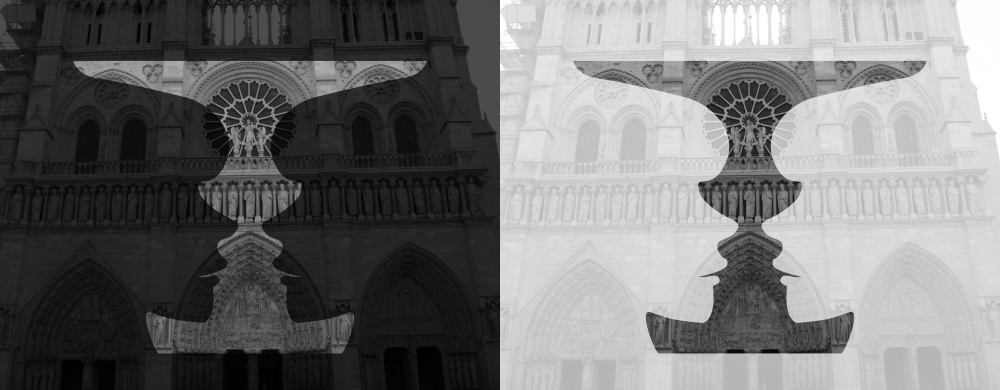
"Rubin's vase-face illusion with Cathédrale Notre Dame de Paris"
The vase part in the left image is the same as that in the right one, but the former appears to be lighter than the latter.
Copyright Akiyoshi Kitaoka 2009 (June 29)
Cathédrale Notre Dame de Paris
References
Anderson, B. L. and Winawer, J. (2005) Image segmentation and lightness perception. Nature, 434, 79-83.
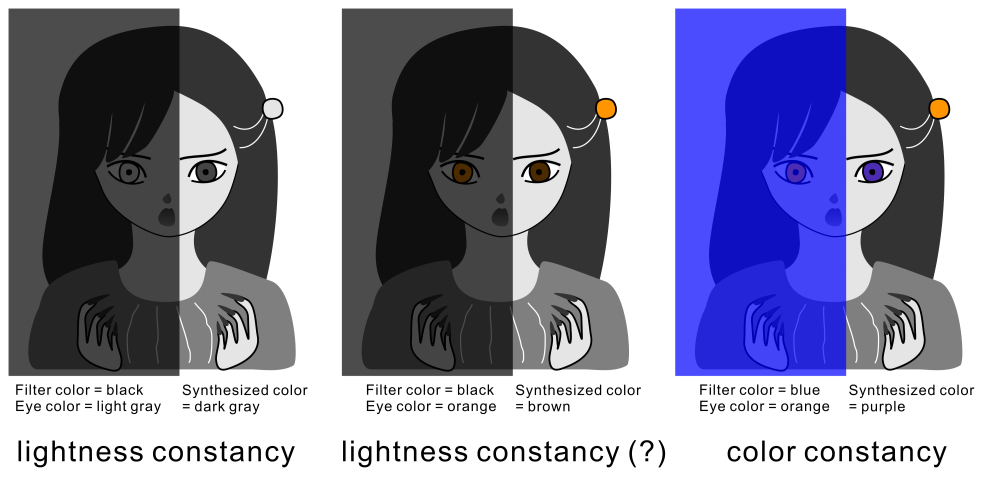
"Eye lightness constancy?"
In the left image, the right eye appears to be lighter than the left eye, though they are the same luminance. This illusion is called "lightness constancy". In the right image, the right eye appears to be orange while the left eye appears to be purple, though they are the same color. This illusion is called "color constancy". In the middle image, the right eye appears to be orange while the left eye appears to be brown, though they are the same color. I wonder whether this illusion should be called "lightness constancy" or "color constancy". The former should be adopted if we consider the filter, while the latter should be used if we stress the difference in color naming.
Copyright Akiyoshi Kitaoka 2009 (June 29)
In reply to Albert
The most famous example of lightness constancy is: Professor Adelson's checker shadow illusion (MIT)
The most famous example of lightness constancy like color constancy is: Professor Purves' cube (Duke University) (He calls it brightness constancy)
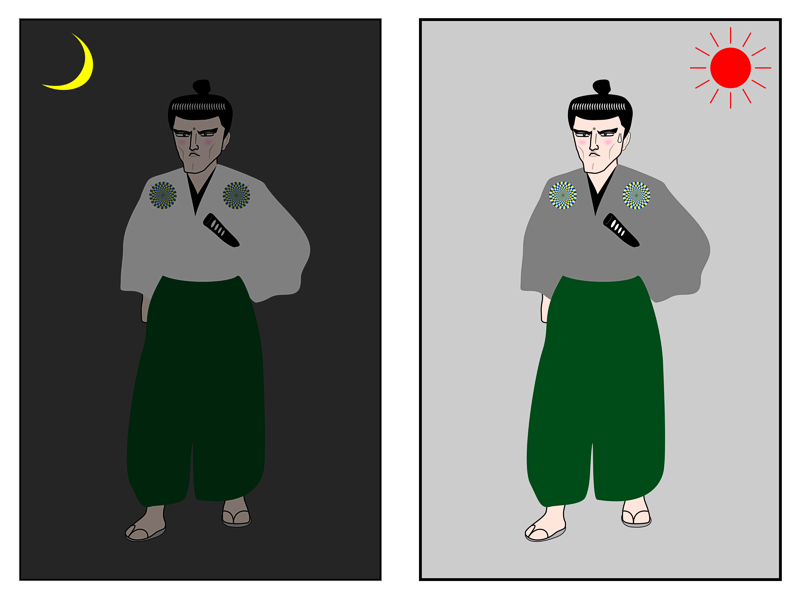
"Kimono lightness constancy"
The kimono in the left image appears to be white, though the luminance is the same as the gray of the kimono in the right image.
Copyright Akiyoshi Kitaoka 2009 (June 15)
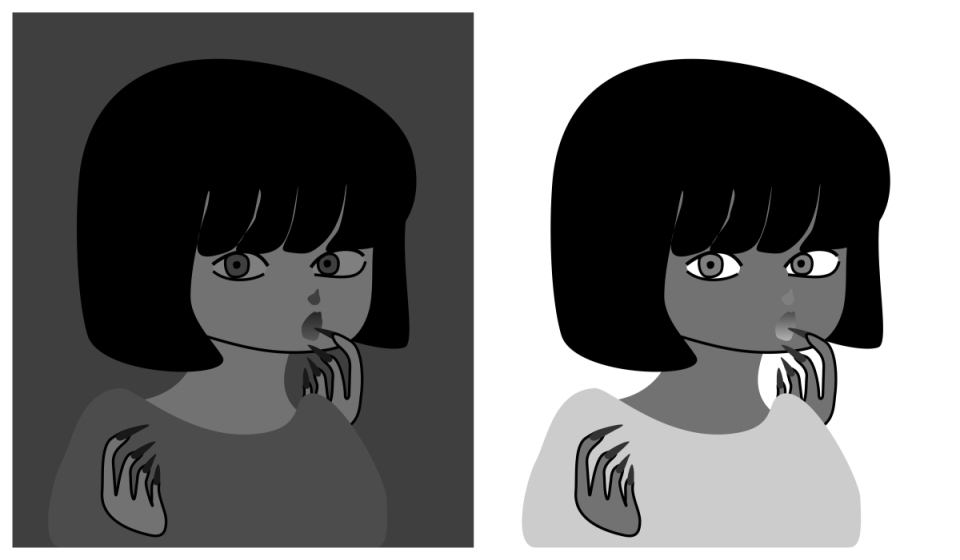
"Skin lightness constancy"
The skin the left image appears to be light, though the luminance is the same as the dark skin in the right image.
Copyright Akiyoshi Kitaoka 2009 (April 30)